How Did Diego Maradona Die? Maradona Bio, Career and Facts
1 year agoHow did Diego Maradona die? Diego Maradona is the greatest icon in history, leading the Argentine national team to victory in the 1986 World Cup. Read on to learn about the background of the legendary football star and illustrious career and discover the details of his ultimate passing.
Who is Diego Maradona?
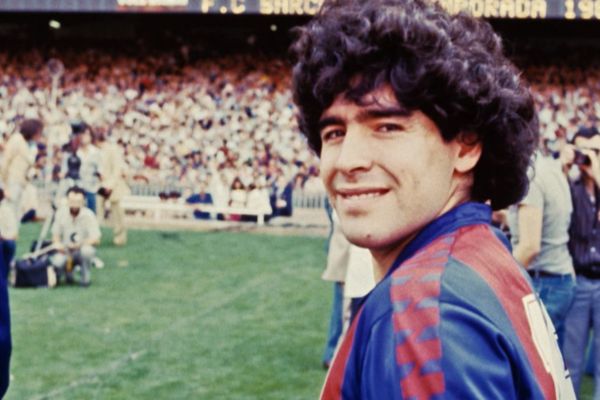
- Full name: Diego Armando Maradona Franco
- Date of birth: October 30, 1960
- Date of death: November 25, 2020 (at the age of 60)
- Place of birth: Lanús, Buenos Aires, Argentina
- Height: 1.65 m (5 ft 5 in)
- Position(s): Forward, attacking midfielder
Diego Maradona was an Argentine professional football player and one of the greatest footballers of all time. He was born in Lanús, Argentina in a family with 3 sisters, 1 older brother, and 1 younger brother. From a young age, Maradona faced difficult living conditions and financial hardships.
Despite living in a poor and impoverished neighborhood, his family remained harmonious and close-knit. At the age of 8, he was discovered for his talent while playing for Estrella Roja Club.
During his teenage years, he joined The Little Onions - the youth team of Argentina Juniors, where he impressed the coaches with his incredible dribbling skills at the age of just 12.
During this time, he also idolized two players: Brazilian playmaker Rivelino and Manchester United winger George Best. Maradona mentioned that these two players inspired him to play football.
Diego Maradona's club career
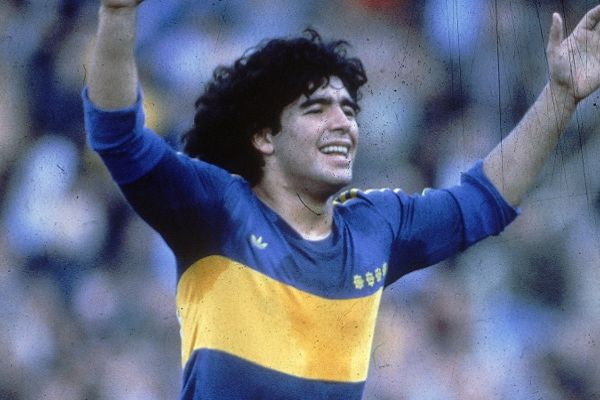
Although Diego Maradona did not play for many clubs, he made significant contributions to the successes of the clubs he was a part of.
Boca Juniors
This was his favorite team, but he only played for Boca Juniors for one season.
Maradona also helped his home team win the Argentine Primera División championship at the age of 18, and in that same season, he won the Copa Libertadores, the prestigious club competition in South America.
Due to his impressive achievements, Barcelona took notice of Maradona and traveled to Argentina to negotiate a contract with him.
Barcelona
Some sources suggest that Barcelona FC paid a record-breaking fee of £5 million to acquire the player. This was an unimaginable price tag in the 1980s.
He became the most expensive player in the world at that time. However, despite the hefty price tag, his performances were relatively underwhelming, and he only played 40 matches for the club. Many experts pointed out that he struggled to adapt to the European football environment.
After two unsuccessful years in Spain, he moved to play for Napoli.
Napoli and the 1986 World Cup, unforgettable moments
This was the club where he spent the most consecutive years, from 1984 to 1992, and he set remarkable records that would be remembered for generations. In total, he played 188 matches for Napoli and scored 81 goals.
He helped the team win the Scudetto (Italian league championship) in 1987, breaking the dominance of Juventus and AC Milan, which had been reigning in Italian football.
Maradona had an illustrious playing career, particularly in 1986 when he participated in the World Cup held in Mexico. He also played a pivotal role in the Argentine national team.
In the quarter-finals against England, Maradona scored a goal that is unforgettable. This goal has also become part of football lore, as he single-handedly dribbled past six opposing defenders, starting from the midfield and reaching the opponent's penalty box.
He surpassed goalkeeper Peter Shilton before calmly slotting the ball into the net, securing a 2-1 victory for Argentina.
In the semi-finals against Belgium, Maradona shone again with two goals against the opposition.
In the final match against West Germany, he continued to excel with two assists, helping Buruchaga and Valdano score, leading to a dramatic 3-2 victory for Argentina.
In 1987, Maradona was awarded both the FIFA and UEFA awards for the best player in the world. He was also the first player to provide two assists in a World Cup final. However, in the years that followed, he had unsuccessful stints at various clubs and retired from professional football at the age of 43.
International career with the Argentine national team
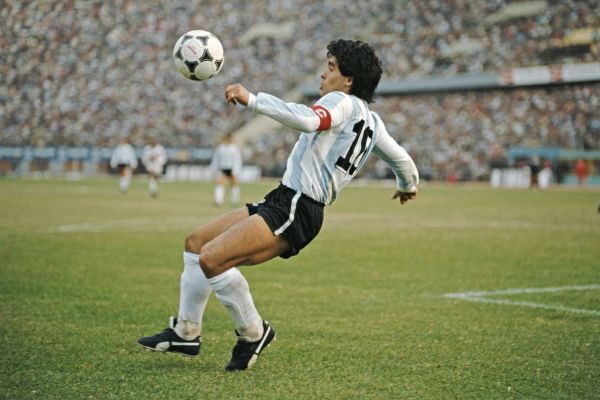
Diego Maradona's international career began when he was very young. Both he and the legendary "Football King" Pelé made their national team debuts at the age of 16.
1976-1981: First Division and National Team
Diego Maradona made his national team debut on February 27, 1977, in a match against Hungary. However, during the 1978 World Cup, coach Cesar Luis Menotti left him out of the official squad due to his young age.
In 1979, Maradona participated in the FIFA U-20 World Cup in Japan and emerged as the shining star of the tournament, helping the Argentina U-20 team win the championship. On a personal level, Maradona was awarded the "Golden Ball" - the title for the tournament's best player.
1981-1982: First World Cup
In the 1982 World Cup held in Spain, Diego Maradona took his first steps on the world's biggest stage in a match against Belgium in the opening game.
Despite a 0-1 loss to Belgium, Argentina advanced to the second round by convincingly defeating Hungary and El Salvador in Alicante with a team caught between youth and experience.
Diego Maradona finished the tournament with 450 minutes of official playing time, 2 goals, and 1 red card. "The Golden Boy" returned to Argentina and had to wait for another 4 years until Mexico 1986 to shine.
The Goal of the Century in 1986 in Mexico
The Goal of the Century refers to the most beautiful goal of all time, which is Maradona's goal against the England national team in 1986.
At the 1986 FIFA World Cup in Mexico, his goal extended Argentina's lead to 2-0.
He controlled the ball from his own half and used his exceptional speed and technique to surpass five English players before deceiving the best goalkeeper in England, Peter Shilton.
He moved past six opposition players with lightning-fast speed while the ball seemed to stick to his feet. This goal is considered the most beautiful goal in Maradona's career.
Beyond its artistic value, it also represents the importance of a World Cup quarter-final match. Therefore, this spectacular performance led FIFA to label it as the "Goal of the Century".
Later, many famous players attempted to replicate this goal. Some include Lionel Messi (in the Copa del Rey semi-final in 2006-07 between F.C. Barcelona and Getafe) when he was only 19 years old, and Javier Saviola (in the Portuguese League when playing for S.L. Benfica).
The Hand of God
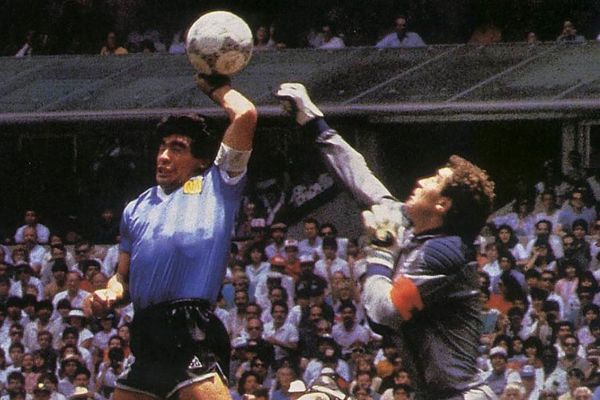
"The Hand of God" is also a very special goal in the history of world football, used by the legendary Diego Maradona in 1986.
In the quarter-final match of the FIFA World Cup between England and Argentina, with the score tied 0-0, in the 51st minute, Maradona jumped up to challenge the ball with goalkeeper Peter Shilton after a clearance by an English player.
Due to his limited height, Maradona decided to use his hand to punch the ball into the net, to the astonishment of the over 114,000 spectators and even his teammates. Unexpectedly, the goal was recognized by the referee.
Immediately, the English players surrounded the referee and reacted vehemently to this perceived violation. However, the referee's decisions remained unchanged.
When asked about the goal by reporters, Maradona famously said, "I scored with the hand of God."
At the end of the match, the Argentina national team won with a total score of 2-1 and became champions after defeating the West Germany team 3-2 in the final.
Diego Maradona's playing style
Maradona's playing technique was remarkable with many unusual features: dribbling at high speed and superior flick-ups over opponents. Due to the skills acquired from childhood, Diego always had accurate passes and was comfortable with any free-kick.
He could shoot from any position, score goals with his head, and execute various different moves. All of these techniques made his style unique and unbeatable.
Coaching career
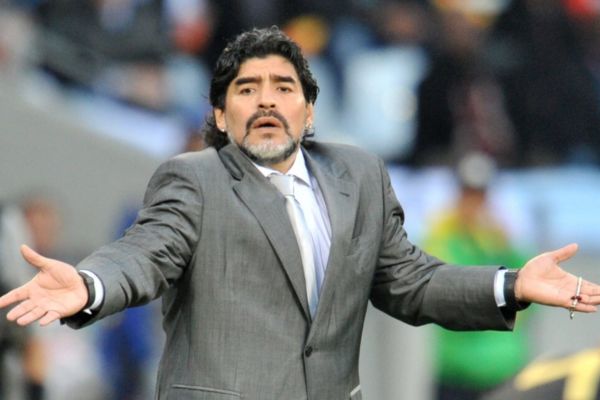
Before ending his playing career, he had a long stint as a coach. First, he managed a lesser-known club, Dep. Deportivo Mandiyu, but this job ended quickly when Diego had a disagreement with one of the club's owners.
After that, Maradona moved on to manage Racing Club de Avellaneda, but there was nothing notable there either.
Despite not achieving success with these two clubs, he didn't give up. Maradona tried to become the coach of the Argentina national team in 2008 and worked for two years.
After the 2010 World Cup, the Argentine Football Association decided not to renew Maradona's contract. He had a year off and was offered a coaching position at UAE's Al-Wasl club. However, like his previous teams, Al-Wasl did not achieve the desired results, and Maradona was often involved in scandals.
Due to his hot temper, Maradona left his coaching position at the club earlier than expected.
When and how did Diego Maradona die?
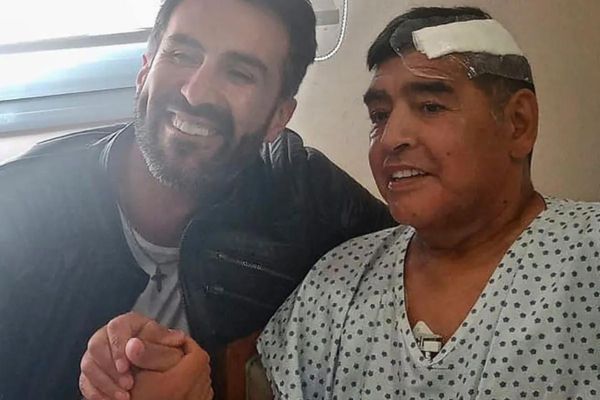
On November 25, 2020, Maradona took his last breath after heart failure at his home in Tigre, Argentina. It was drug abuse that caused many health issues. At the time playing for Barcelona, the Argentine legend took it as a means to adapt to a new environment. Later on, he tried to overcome his addiction through treatments in Argentina and Cuba.
In 2000, Maradona experienced a crisis of high blood pressure due to a heart rhythm disorder. Those around him denied that his drug use had led to the nervous tension crisis.
In April 2004, the Argentine hero suffered a heart attack. Excess weight and drug addiction were the main reasons.
After recovering, Diego weighed 120 kg. He made efforts to get back on track by undergoing gastric bypass surgery and following a special diet, which allowed him to lose 50 kg.
In November 2020, Maradona underwent surgery to remove blood clots in his brain. He was discharged from the hospital on November 11 but continued to receive daily care and monitoring until passing away.
Diego Maradona's death remains mysterious due to concerns about his medical treatment and ongoing investigations. There were allegations of medical negligence and irregularities, and some involved medical professionals were charged with negligence and involuntary manslaughter.
Diego Maradona's titles and achievements
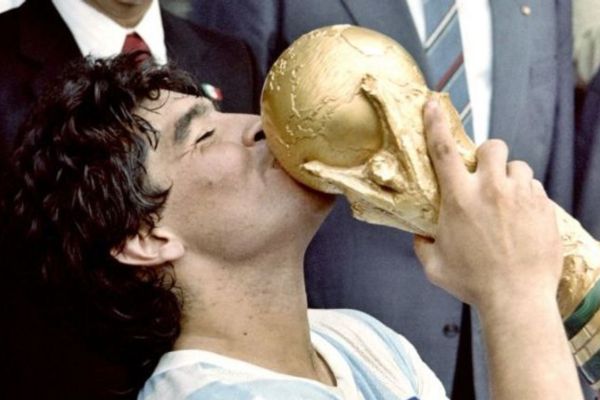
National Championships
- 1981: Argentine Primera División (Metropolitano) - Boca Juniors (Argentina)
- 1983: Copa del Rey - F.C. Barcelona (Spain)
- 1983: Copa de la Liga - F.C. Barcelona (Spain)
- 1983: Supercopa de España - F.C. Barcelona (Spain)
- 1987: Serie A - S.S.C. Napoli (Italy)
- 1987: Coppa Italia - S.S.C. Napoli (Italy)
- 1990: Serie A - S.S.C. Napoli (Italy)
- 1990: Supercoppa Italiana - S.S.C. Napoli (Italy)
International Championships
- 1979: FIFA World Youth Championship - Argentina U20
- 1986: FIFA World Cup - Argentina national team
- 1989: UEFA Cup - S.S.C. Napoli
- 1993: Artemio Franchi Trophy - Argentina national team
FIFA World Cup
- 1982 FIFA World Cup: Argentina - 11th place
- 1986 FIFA World Cup: Argentina - Winner
- 1990 FIFA World Cup: Argentina - Runner-up
- 1994 FIFA World Cup: Argentina - 10th place
Individual Honors
- Argentine Primera División Top Scorer (Metropolitano) - 1978, 1979, and 1980
- Best Player at the FIFA World Youth Championship in Japan - 1979
- Argentine Primera División Top Scorer (Nacional) - 1979 and 1980
- Olimpia de Oro as Best Argentine Athlete, awarded by the Circle of Sports Journalists (CPD) - 1979, 1980, 1986
- Olimpia de Plata as Best Argentine Athlete, awarded by the Circle of Sports Journalists (CPD) - 1979, 1980, 1981, 1986
- Ballon d'Or as the Best Footballer of the Year, awarded by the Center of Accredited Journalists in the AFA (CEPA) - 1979, 1980, 1981
- South American Footballer of the Year, according to a survey by El Mundo newspaper, Caracas - 1979, 1980, 1986, 1989, 1990, and 1992
- Konex Diploma of Merit - 1980 and 1990
- Gandulla Trophy as the Best Footballer of the Year - 1981
- UNICEF Ambassador - 1985
- Best Player (Golden Ball) at the 1986 FIFA World Cup, as voted by FIFA - 1986
- Second highest scorer at the 1986 FIFA World Cup - 1986
- Pluma de Oro as the Best European Athlete - 1986
- European Footballer of the Year (Onze d'Or), awarded by Onze magazine - 1986 and 1987
- Selected among the Seven Magnificent Athletes by Gueron Sportivo - 1986
- World Soccer Player of the Year, awarded by World Soccer Magazine - 1986
- Honorary Citizen of Buenos Aires City (Ciudadano Ilustre) - 1986
- Serie A Top Scorer - 1987
- Coppa Italia Top Scorer - 1988
- Honorary Golden Ball for his career, awarded by France Football - 1995
- Second place in the list of Greatest Footballers of All Time, as voted by previous Ballon d'Or winners - 1999
- Most Beautiful Goal in the History of Football - 1999
- Olimpia de Platino as the Argentine Athlete of the 20th century, awarded by the Circle of Sports Journal
Follow ANZ Football for more interesting articles on football players and up-to-date football news.
Other news

How To Watch All Premier League Games in UK Today
1 year ago
Top 10 Coolest Football Club Logos in the World
1 year ago
What is A Derby in Football? Meaning and Origins
1 year ago
Everything You Need to Know About New Premier League Rules for the 2023/24 Season
1 year ago
Where and How to Watch the 2023-24 Premier League in the UK
1 year ago